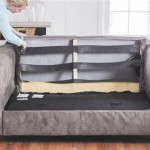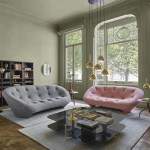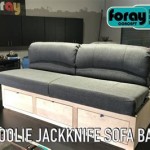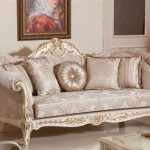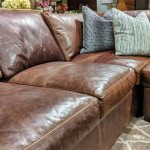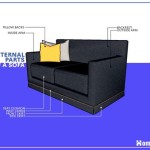The Enduring Appeal of the Mid-Century Sofa End Table
The mid-century modern aesthetic, with its clean lines, organic shapes, and focus on functionality, continues to exert a powerful influence on contemporary interior design. Integral to this style is the sofa end table, a seemingly simple piece of furniture that serves as both a practical surface and a visual anchor. Understanding the defining characteristics, materials, and historical context of mid-century sofa end tables is crucial for appreciating their enduring appeal and incorporating them thoughtfully into modern living spaces.
The mid-century modern movement, broadly defined as spanning roughly from the 1930s to the 1960s, was characterized by a departure from the ornate and heavily decorated styles that preceded it. The aftermath of war and the rise of new technologies fostered a desire for simpler, more functional designs that were accessible to a wider segment of the population. This ethos is readily apparent in the design of mid-century sofa end tables.
Functionality was a paramount concern. End tables were designed to hold lamps, books, drinks, and other everyday items within easy reach of the sofa. Size and height were carefully considered to ensure comfort and convenience. Aesthetic considerations were equally important, but always subservient to the primary purpose of utility. The goal was to create an object that was both beautiful and useful, embodying the principles of good design.
The absence of excessive ornamentation is a key identifier. Mid-century designers favored clean lines and geometric shapes, often incorporating gentle curves to soften the overall appearance. The rejection of elaborate carvings and embellishments allowed the inherent beauty of the materials used to take center stage. This emphasis on material honesty is a hallmark of the style.
Defining Characteristics of Mid-Century Sofa End Tables
Several characteristics define a mid-century sofa end table. Understanding these features is essential for identifying authentic pieces and appreciating the design principles that informed their creation.
Firstly, geometric forms are prevalent. Squares, rectangles, circles, and ovals are common base shapes, often combined in unexpected ways. Legs might be tapered and splayed, adding a touch of dynamism to the design. The use of simple, unadorned shapes underscores the emphasis on functionality and visual clarity.
Secondly, a low profile is often characteristic. End tables designed for use with sofas tend to be relatively low to the ground, aligning with the lower seating heights that were popular during the period. This creates a sense of visual harmony and ensures that the table does not overwhelm the surrounding furniture.
Thirdly, the incorporation of storage is a recurring theme. While many mid-century end tables are simple surfaces, others feature drawers, shelves, or cabinets for concealing clutter. This reflects the emphasis on practicality and the desire to create furniture that is both beautiful and functional. Storage solutions were often cleverly integrated into the design, maintaining the clean lines and minimalist aesthetic.
Finally, the use of mixed materials is common. Designers frequently combined wood, metal, and glass to create visually interesting and structurally sound pieces. Wood might be used for the tabletop and legs, while metal accents, such as brass or chrome, provide a touch of elegance. Glass was sometimes incorporated as a tabletop surface or as a decorative element within the design.
Materials Commonly Used in Mid-Century Sofa End Tables
The choice of materials played a crucial role in defining the aesthetic of mid-century sofa end tables. Certain materials were favored for their durability, affordability, and ability to achieve the desired visual effect.
Wood, particularly hardwoods such as walnut, teak, and birch, was a staple material. These woods were prized for their rich color, distinctive grain patterns, and ability to be easily shaped and finished. Walnut, in particular, was highly sought after for its luxurious appearance and durability. Teak, with its natural oils that resist rot and decay, was often used in outdoor furniture or pieces intended for high-humidity environments. Birch, a lighter-colored and more affordable option, was frequently used in mass-produced furniture.
Metal, including steel, brass, and chrome, was also widely used. Steel was often used for the legs and frames of end tables, providing structural support and a sleek, modern look. Brass accents, such as drawer pulls and decorative inlays, added a touch of warmth and sophistication. Chrome, with its highly polished surface, was often used for legs and trim, reflecting the light and creating a sense of visual lightness.
Glass, both clear and tinted, was another popular material. Glass tabletops were often used to create a sense of transparency and to showcase the underlying structure of the table. Tinted glass, such as smoked or colored glass, added a touch of drama and visual interest. Glass was also used in decorative elements, such as inlays or panels.
Laminates and veneers were also employed to achieve the desired aesthetic at a lower cost. Laminates, made from layers of paper or fabric bonded to a substrate, provided a durable and easy-to-clean surface. Veneers, thin slices of wood applied to a core material, allowed designers to use expensive woods in a more economical way. While these materials were less expensive than solid wood, they still allowed for the creation of furniture that captured the essence of the mid-century modern style.
Notable Designers and Manufacturers of Mid-Century Sofa End Tables
Several designers and manufacturers played a significant role in shaping the aesthetic of mid-century sofa end tables. Their innovative designs and commitment to quality helped to define the style and establish its enduring appeal.
One prominent figure is George Nelson, known for his playful and functional designs. His end tables often featured clean lines, geometric shapes, and innovative storage solutions. His work for Herman Miller, a leading manufacturer of mid-century modern furniture, helped to popularize the style and make it accessible to a wider audience.
Another influential designer is Charles Eames, along with his wife Ray Eames. Their designs were characterized by their organic shapes, use of innovative materials, and focus on ergonomics. Their end tables often incorporated molded plywood and other modern materials, reflecting their experimental approach to design. Like Nelson, they also worked with Herman Miller, further solidifying the company's reputation as a leader in mid-century modern furniture.
Florence Knoll Bassett, a prominent architect and designer, also made significant contributions to the mid-century modern movement. Her designs were characterized by their clean lines, geometric forms, and sophisticated aesthetic. Her work for Knoll, a furniture company founded by her husband, helped to establish the company as a major player in the mid-century modern market.
Beyond these individual designers, several manufacturers played a vital role in producing and distributing mid-century sofa end tables. Companies such as Lane Furniture, Broyhill Furniture, and Drexel Heritage produced a wide range of end tables in various styles and price points. These companies helped to make mid-century modern furniture accessible to a broader audience and contributed to its widespread popularity.
The designs from these individuals and manufacturers continue to be highly sought after by collectors and design enthusiasts. Their contributions helped to shape the aesthetic of mid-century sofa end tables and establish their enduring appeal.
Incorporating mid-century sofa end tables into contemporary spaces requires careful consideration of scale, proportion, and material. A too-small table may look insignificant, while a too-large table can overwhelm the space. Matching the materiality of the table to the surrounding furniture and decor can create a cohesive and harmonious look.
When pairing a mid-century end table with a modern sofa, it's important to consider the lines and shapes of both pieces. A sleek, minimalist sofa might pair well with a table featuring clean lines and geometric forms. A more curvaceous sofa might benefit from a table with softer lines and organic shapes. The goal is to create a balance between the two pieces, avoiding a clash of styles or proportions.
The placement of the end table is also crucial. Ideally, it should be positioned within easy reach of the sofa, allowing for convenient access to drinks, books, and other items. The height of the table should also be considered, ensuring that it is comfortable to use while sitting on the sofa. A rule of thumb is to choose an end table that is approximately the same height as the sofa arm.
Ultimately, the key to successfully incorporating mid-century sofa end tables into contemporary spaces is to embrace the principles of good design that informed their creation: functionality, simplicity, and material honesty. By understanding these principles and carefully considering the scale, proportion, and materiality of the table, it is possible to create a space that is both stylish and functional.

Reeve Mid Century Side Table 28 West Elm

Mid Century Couch With Built In End Tables Soulclothingwanaka Soulst Modern Furniture House

Mid Century Side Table 55 Cm West Elm

Mid Century Side Table 55 Cm West Elm

Mid Century Sofa With Attached End Tables Chairish

Mid Century Modern Side Table Makeover Sarah Hearts

Chadwick Mid Century Side Table 20 West Elm

Buy Dark Lloyd Mango Wood Sofa Side Table From The Next

Winslett Mid Century Modern End Table From Dutchcrafters Amish

How To Make Your Own Mid Century Modern Furniture Living Room Decor

